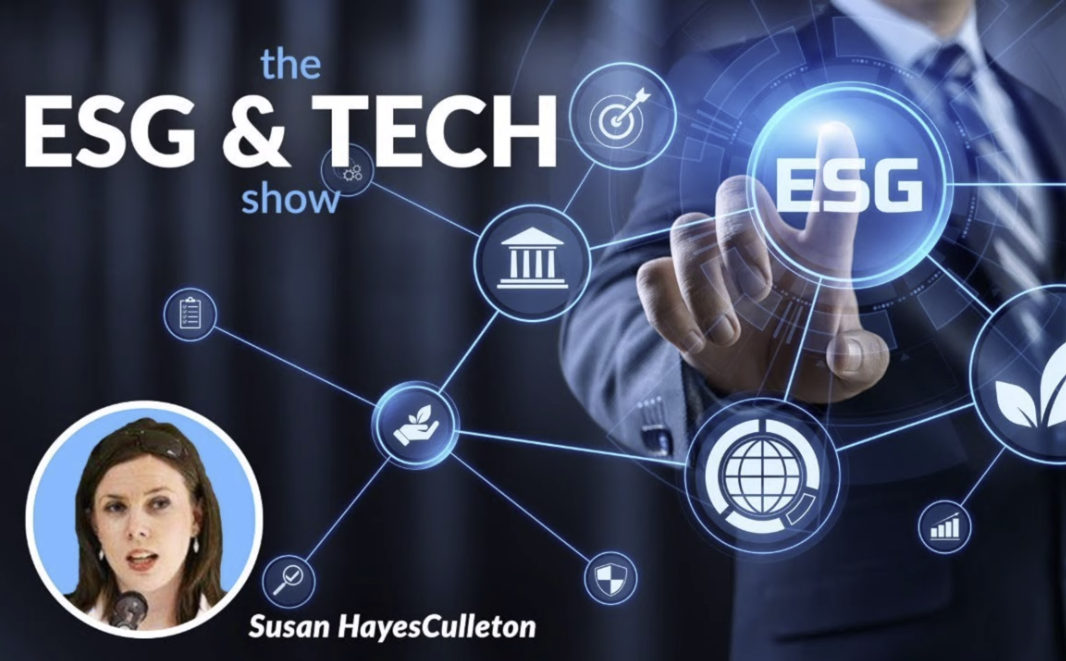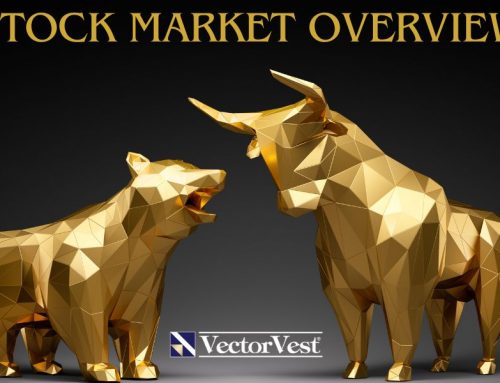ESG & TECH SHOW – BLOCKCHAIN – A DISRUPTOR
During the latest episode of the ESG & Tech Show, I focused on the blockchain. It’s a topic that is gaining more and more traction all the time. It has the potential to disrupt many business models and is often mired in confusion. Therefore, it merited a proper discussion aimed at clarifying how it works, understanding how it could affect businesses and their respective interactions with customers as well as analyzing the stocks set to be highly influenced by the blockchain’s growth.
Let’s compare a traditional bank transfer to that of a blockchain transaction to set the scene. If I was to send money to you, then it would move from one bank account to another. The record would be stored on the bank’s system and it would change the balance on my account. If the bank’s data system was hacked, then the hacker could find details of that transaction and unfortunately, there is a range of different ways that financial fraud is committed.
In contrast, if a transaction happens on the blockchain, it’s recorded on a “distributed ledger”. That means that it’s publicly available so, anybody can see the transaction has occurred between two different parties (which implies how transparent it is). Therefore, the data can’t be hacked because it’s publicly available. All these transactions go into a “block” and then this block of transactions is connected through a digital seal so that when joined together, they make up the “blockchain”. Finally, to change any of these historical transactions, one would also need to change not just the block with that specific transaction but the whole blockchain back to the beginning, which is almost impossible.
Therefore, the blockchain is described as decentralized, immutable, and transparent.
7 blockchain business models
In a piece published on “Business Model Analyst”, there are seven different business models created out of blockchain technology:
- Token economy
In the episode, I described how people who use Trip Advisor are given social badges based on their feedback. For example, I recently went on “Dublin Delicious Tours” and left a review for others to give them some insights into the experience. On the other hand, given that we exhibited at the VFB show in Antwerp, I wanted to read about other peoples’ experiences of the city on the same site so that I could get some ideas of what to do before flying home. Rather than incentivize people to engage with genius badges or discounts, the token economy can lead to new cryptocurrencies being offered to people who participate in certain activities. Keep an eye out for “social tokens”.
- Blockchain as a service
This refers to when a person or business wants to create their blockchain or join another larger digital network. For example, Amazon Managed Blockchain is a “fully managed service that makes it easy to create and manage scalable blockchain networks using the popular open-source frameworks”.
- Development platforms
Another way that people in business describe blockchain is as a “track and trace” system. To give you a very specific example, the world’s first blockchain beer was brewed in Northern Ireland which “enables the consumer to find out the provenance of the beer – ingredients, supply chain, methods of production – by scanning the graphic on the label (which looks like a bar code) with a smartphone.” I interviewed Shane McCarthy himself about how the blockchain records all of the beer’s “transactions” i.e. the inputs and how they progressed through the supply chain to arrive at the product which consumers can drink. Of course, these track and trace systems ultimately have to be designed and built and that is a new business model in itself.
- Blockchain Based
Some software packages include blockchain technologies as part of their overall offering. In fact, businesses that have been able to successfully execute any one of the aforementioned business models are prime acquisition targets for a company that wants to leapfrog its way into this fast-growing area.
- Network Fee Charge
If an end-user wants to send money to the originators of music (or other art), they can do so through the blockchain so that there is more connection between the person enjoying the output and the original creator. According to a Charged piece, “Spotify is planning to add blockchain technology and non-fungible tokens (NFTs) to its streaming service, as the excitement grows over the possibility of NFTs boosting artists’ earnings” and on 10th May 2022, Instagram announced “Creators are using new technologies like NFTs to take more control over their work, their relationship with their fans, and how they can monetize. At Meta, we’re looking at what creators are already doing across our technologies to improve the experience, help them create more monetization opportunities, and bring NFTs to a broader audience.”
- Blockchain professional services
This describes the professional services and consultancy offerings that are emerging with the dawn of something new. From change management programs, and strategic reviews on a macro level to very specific initiatives like dApp (distributed app development or considering how blockchain is leading the “triple entry accounting system”.
- Peer-to-peer blockchain business model
Imagine if you could send money to another person but without a business (e.g. Revolut) or a bank or a peer-to-peer currency broker (e.g. TransferMate). If you were to eliminate the bank, the auditor, and the regulator to use a transferable system whereby the process was self-regulating and immutable, then you’re imagining exactly what the peer-to-peer blockchain business model could work. If you’re able to envision this in your mind’s eye, then you’re also likely coming up with the big changes there would be in both industries of banking and auditing if this was to happen en masse.
Of course, blockchain has been connotated with negative points too whether it’s the volatility of cryptocurrencies (which shouldn’t be used interchangeably with the technology underlying them), the energy supply a blockchain needs for miners to create the digital seal in between the blocks as well as how there can be tradeoffs between scalability, efficiency, and security.
Blockchain stocks
While this is an evolving area all the time, naturally as investors, we want to interrogate the growth prospects of stocks immersed in this theme or at least (positively!) influenced by it. One of the great things about VectorVest is that I can create a watchlist of ideas generated by different sources. For example, in my research for the show, I came across “9 Blockchain Stocks to Invest In” from the Motley Fool as well as “7 Best Blockchain Stocks to Buy Right Now” from GOBanking Rates. There was some overlap and at the bottom of my Stock Viewer, I could get a portfolio view of these companies.
Based on this watchlist on Tuesday 31.02.2022, it was evident that in combination this group of shares had:
- An above-average long term price appreciation potential as their RV was greater than 1.19
- A marginally below average consistency and predictability of financial performance as their RS was at 0.96
- A technical analysis that pointed to the downside as their direction, magnitude, and dynamics was at 0.61 and thus well below 1
- A very unstable ability to withstand severe and/or lengthy price declines as its Comfort Index was at a very low 0.40
- An impressively high earnings growth rate of 27%
- A small dividend yield of 0.4%

It’s well worthwhile to put selections of stocks that spark your interest from conversations or research into a watchlist so that you can take that birdseye view.
However, it’s also important to “weed the garden” as we say in VectorVest. I can improve the metrics of this portfolio significantly by identifying what might be holding the portfolio back. If I wanted to make a big difference in one fell swoop, I might take out the stocks with a “Sell” recommendation. Instead, let’s take a more granular approach:
- Bit Digital has a Comfort Index of 0.04 but has one of the strongest Relative Value levels of 1.49. I would need to consider which is more important to me – long-term price appreciation potential (and thus Relative Value) or the stock’s ability to withstand severe and/or lengthy price declines.
- Riot Blockchain posits a similar conundrum.
- Block Inc has RV, RV, RT, VST, and CI all below 1.0 so this may be a clear candidate to “weed out” of the list to improve the overall outcome.
- Visa and Mastercard have very similar businesses but have markedly different offerings for investors. Visa has better fundamentals (as evidenced through better long-term price appreciation potential (RV) and consistency and predictability of financial performance (RS)), but Mastercard has more momentum from its buyers (as evidenced through its direction, magnitude, and dynamics).
Arising from this analysis, let’s take out Bit Digital, Riot Blockchain, Block, and Mastercard.

The actions taken deliver the following results:
- The long term price appreciation potential has dropped marginally from 1.19 to 1.11
- The consistency and predictability of financial performance have increased from 0.96 to 1.01
- The direction, magnitude, and dynamics of the portfolio have grown from 0.61 to 0.68
While these amendments are a significant improvement, it’s clear there is more work to do by taking another iterative approach to this watchlist and continuing to weed out those stocks that don’t fit the style of the investor or trader.
To watch the full ESG & Tech episode, check it out on our YouTube channel, and make sure to join us for our next session focusing on the fastest growing ETFs in ESG & Technology!








Leave A Comment